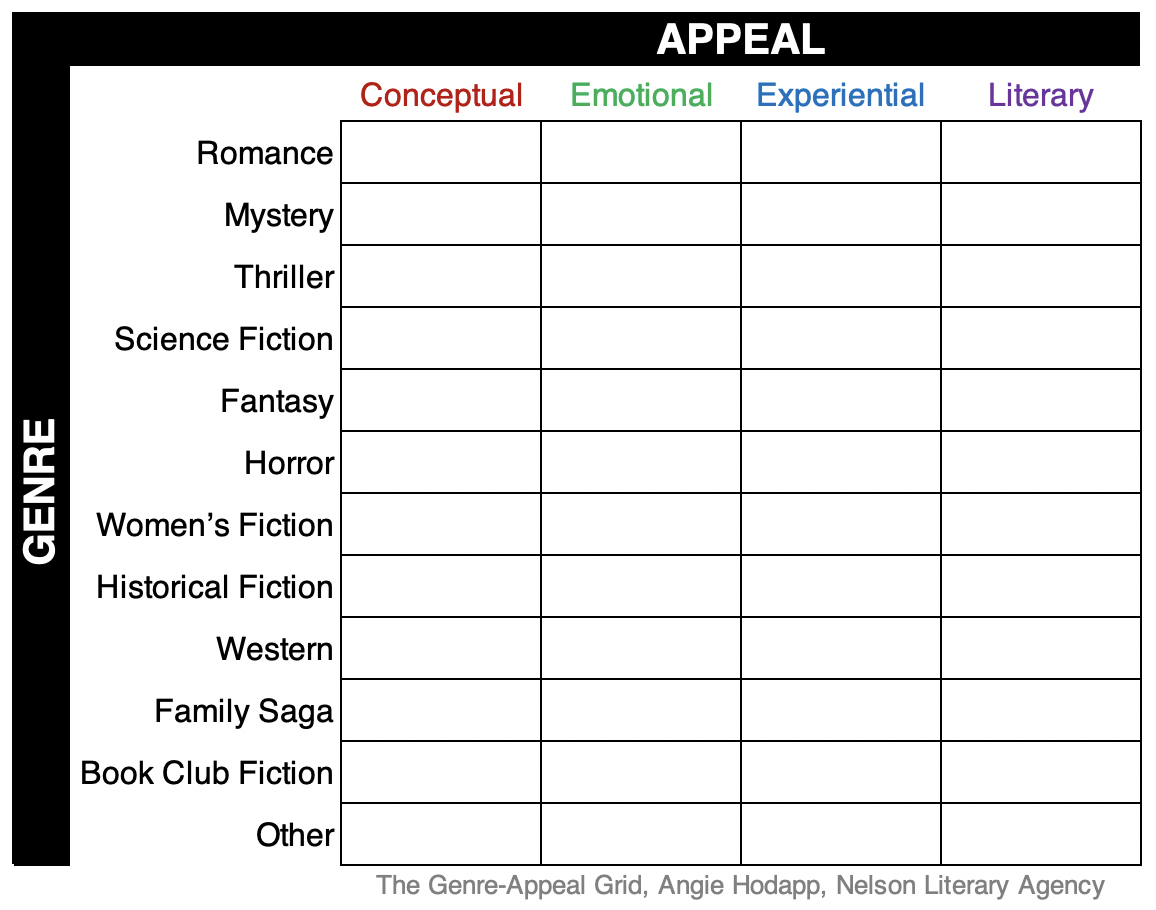Last month, in Part I of this article, we explored comps (comparable titles and authors) and how crucial they are not only to getting an agent’s attention, but also to getting your query letter’s pitch read through the right lens. This month, we’ll dive deeper into how you can choose the best possible comps for your manuscript.
First, let’s revisit the idea that your comps have one job, which is to identify an existing audience for your book by filling in the blank in the following sentence:
- “My book will appeal to readers who enjoyed ___.”
That’s the simplest wording, and it’s perfectly fine, but you can certainly mention more than one comp. Something concise like this is also perfectly fine:
- “My book will appeal to fans of Kristin Hannah and Jodi Picoult.”
You could take it up a notch by giving a little teaser about how or why each comp is relevant to your manuscript:
- “My book will appeal to readers who love the richly imagined worlds of N. K. Jemisin and Nnedi Okorafor.”
- “With the wry voice and deep science of The Martian by Andy Weir and the fast pace and crime-thriller elements of Leviathan Wakes by James S. A. Corey, my sci-fi novel…”
- “This WWII-set novel will speak to fans of the heartfelt poignancy of Jamie Ford’s Hotel on the Corner of Bitter and Sweet and the heart wrenching friendship story of Elizabeth Wein’s Code Name Verity.”
The key is to keep it brief: two or three comps and, if you choose, one or two elements of each that that are relevant to your novel. Think snapshot, not photo album. Avoid the temptation to waste valuable space in your query letter pontificating about your comps.
Another pitfall is listing too many comps. More than three muddies the waters, and the slush reader will struggle to understand the thread you think connects them all. And more than three means more potentially wasted query-letter space you could have devoted to your pitch.
Yet another pitfall is comping books that have become canon. The Lord of the Rings, A Song of Ice and Fire, Harry Potter… These series loom so large they blot out the sun, and, as such, will do little to cast light on a more easily identified targeted audience. The fandoms of canonized works are so vast that they spill over and spread out across marketing and genre categories used by the book industry (publishers, marketers, publicists, sales reps, booksellers, librarians) to get the most books into the most hands of their most interested readers. It would be great if every book transcended categorization to become part of the literary canon! But canonization happens years or decades after the book is on the shelf; it most definitely does not happen at the query stage. So comping canonized titles or series is often a missed opportunity.
Let’s look at some other examples. One thing we see often and that works well is a comp mashup. That’s when a writer positions their manuscript at the intersection of two comparables:
- “It’s X-Men meets To All the Boys I’ve Loved Before.”
- “Think Killing Eve meets Outlander.” (Or: “The sexy international intrigue of Killing Eve meets the epic scale and time-traveling cast reminiscent of Outlander.”)
- “Imagine Ferris Bueller as the protagonist of an Agatha Christie–style murder mystery written for middle-grade readers.”
I’m making these examples up as I go along, and it’s kind of fun to imagine how such mashups might work in a completed novel. But I hope they’re helping you think of ways to comp your own manuscripts!
The Importance of the Reading Experience in Choosing Comps
The point of all of this—and I mentioned this in Part I—is that comps should cast a spotlight on your audience. Comps are reader focused, which means they are market focused. Therefore, strive to comp the experience of your book.
Think of your top-ten, all-time favorite books. What is it you remember most about them? Why did they make it onto your list? Because you experienced something. A revelation. A connection to a character who came to feel like a real person to you. A sense of joy or surprise or satisfaction or wonder or exhilaration or even sorrow or fear. The experience of a story is why readers return to their favorite authors and series time and again.
So if you’re writing a work of upmarket women’s fiction about a divorcée who works in a museum and finds herself talking through her problems to the skeleton of a Tyrannosaurus rex that towers over the museum’s foyer, are you going to comp Jurassic Park? No! Please don’t! Why? Because for an audience, the experience of this novel is not going to be anywhere near the experience of Jurassic Park—the novel or the movie. The two stories are simply not going to appeal to the same audience.
When you’re choosing your comps, think first about what experience your novel will deliver to its readers. Be able to articulate that experience. Write it down on a sticky note. From there, it will be easier to think of other books or authors that have already provided a similar experience, hopefully with some degree of visibility or success in its genre’s market.
Creative Commons Photo Credit: Philippe Put











